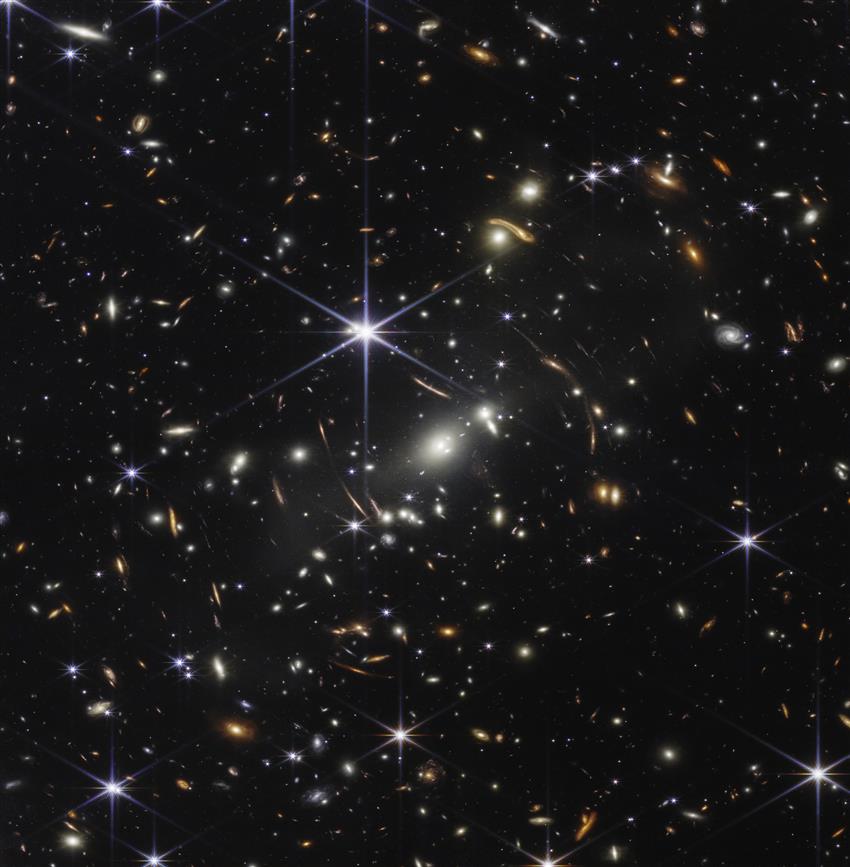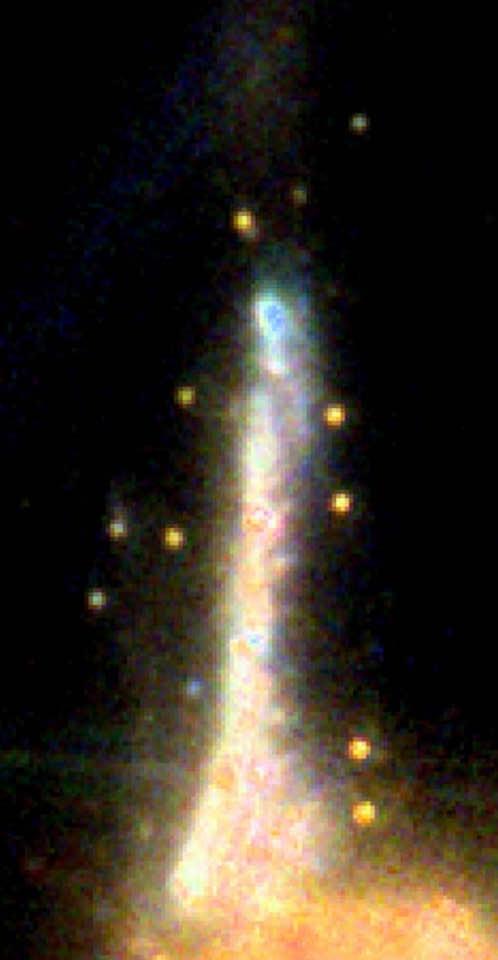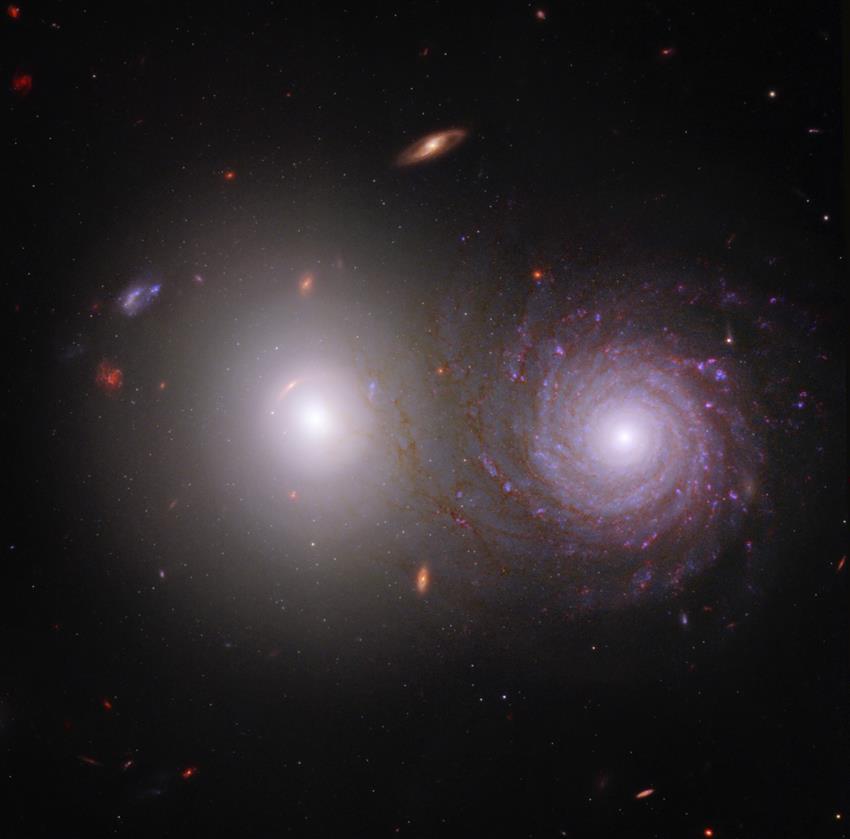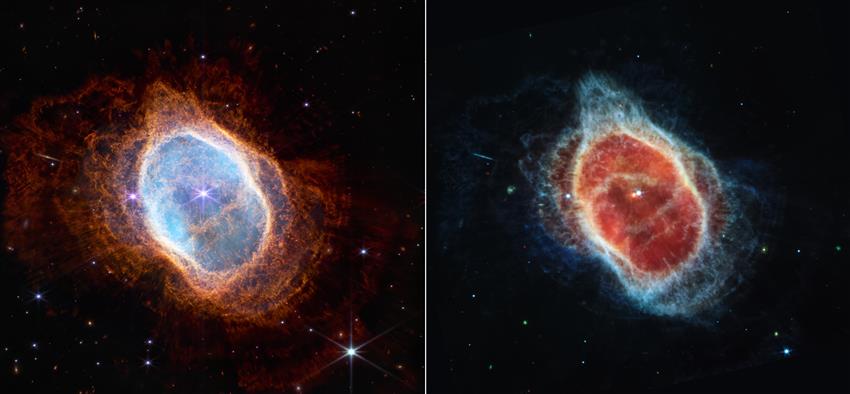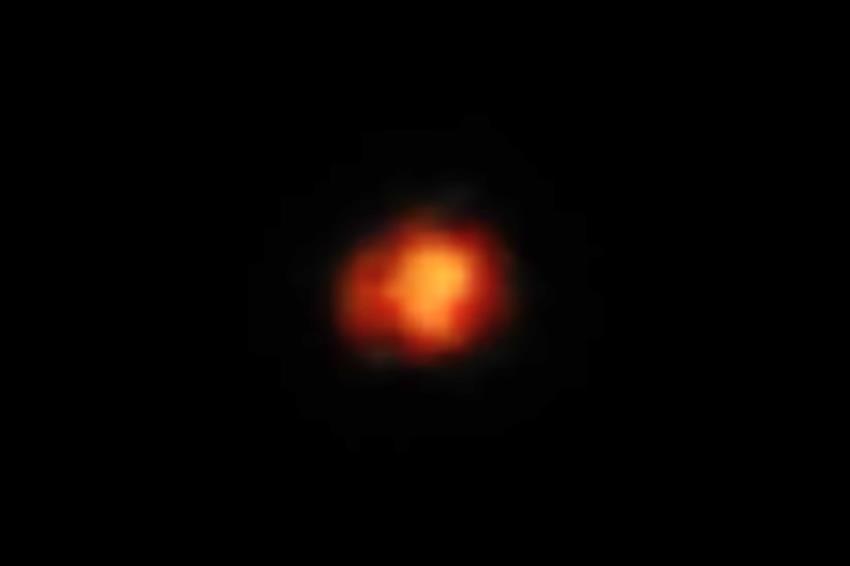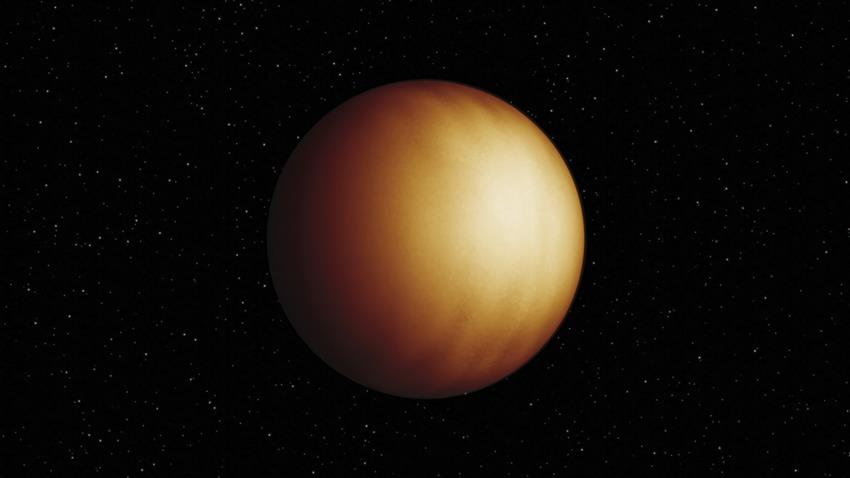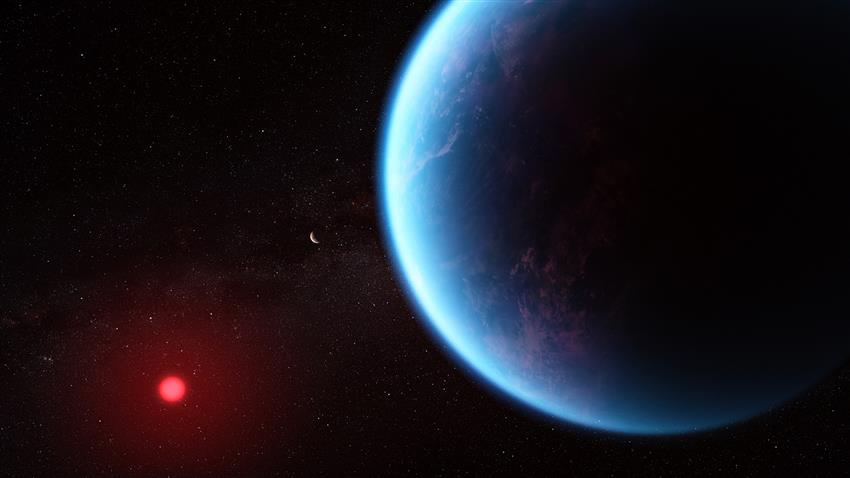Ten fascinating Webb discoveries that Canada has helped make
On , the James Webb Space Telescope launched into space. During its one-month journey to its destination, its mobile parts were deployed one by one. Then, Webb settled its temperature and fine-tuned its tools. Six months later, the science party started!
With Canada's Near Infrared Imager and Slitless Spectrograph (NIRISS) instrument and researchers involved, Webb is changing how we understand space. Discover some of this powerful telescope's amazing findings in which Canada played a key role.
Galaxies and stars
1. Redshift revelations: unlocking cosmic distances
Discovery from Webb's First Deep Field! As light travels through our expanding universe, it is stretched into longer wavelengths, meaning that it is moving along the spectrum of light to appear more red. This is known as "redshift." It helps astronomers figure out how far things are, how old they are, and how they change over time. Thanks to NIRISS on Webb, a team of Canadian and international astronomers led by Dr. Gaël Noirot, a postdoctoral researcher at Saint Mary's University in Halifax, hit the jackpot, revealing the redshifts of 190 cosmic sources, which are all galaxies. And guess what? 123 of these sources did not previously have a known redshift.
The team also spotted three galaxy overdensities, or groups of galaxies that seem clustered together, that were invisible in previous data. It's like opening a treasure chest of secrets from the universe!
2. Investigating ancient star clusters
In the beautiful image of Webb's First Deep Field, scientists studied a faraway galaxy nicknamed the Sparkler. They used Webb's data to look at celestial "sparkles" around this galaxy, made brighter by a group of galaxies acting like a cosmic magnifying glass. These sparkles, also called globular clusters, have a red colour because they are mostly filled with older, red stars.
Researchers from the Canada-led CANUCS collaboration, with the first authors being Lamiya A. Mowla and Kartheik Iyer from the University of Toronto, found these sparkles using spectroscopic data from the Canadian NIRISS instrument aboard Webb. Because these clusters don't appear to be actively forming any stars, they are likely quite old. And because they have been observed at a time when the universe was only about 4 billion years old, they could be some of the first globular clusters ever formed! More study of these sparkles could change how we think these clusters form and give us insight into the early universe.
3. Unveiling the mysteries of spiral galaxies
A team of researchers, including Hamid Hassani and Erik Rosolowsky from the University of Alberta, identified and classified 1271 21-micron sources in four nearby galaxies, including NGC 7496 shown in the image above. These sources, which appear as bright spots in space, each have a unique story and can be different things such as background galaxies and dusty stars. Most spots are groups of newborn stars, some as young as 2 million years old!
With the Webb Telescope, researchers studied 19 spiral galaxies, discovering more about how they formed and evolved. It's like peeking into bustling neighbourhoods in outer space, just like a cosmic census!
4. Red patterns in the cosmos: a galactic revelation
In the dance of galaxies, space dust does two things: it hides starlight and helps new stars form. Scientists, including an astronomer from the NRC Herzberg Astronomy and Astrophysics Research Centre, armed with the Hubble and Webb Telescopes, explored the VV 191 galaxy pair. These two galaxies are not actually actively interacting, but they appear as overlapping. As one galaxy, VV 191a, lit up its spiral companion VV 191b, beautiful patterns emerged, colouring the cosmos in vibrant reds.
In addition to being beautiful, galaxy VV 191a acts as a huge magnifying glass. It helped scientists spot distant galaxies, making them much brighter than they would otherwise appear. This research not only revealed some secrets of dust in space, but also gave us a rare glimpse at distant galaxies that lay hidden until now.
5. Mass of a dying star's progenitor
Ever heard of cosmic ghosts? Well, planetary nebulae are basically just that. They're like souvenirs from stars that are retiring. Scientists, including astronomers Jan Cami and Els Peeters from Western University and Sun Kwok from the University of British Columbia, used Webb to peek at one planetary nebula called NGC 3132, or the Southern Ring Nebula. Guess what they found! Complex shells made of gas and dust and a red dusty disk hugging the recently retired star at the centre of the nebula. The beautiful patterns in the shells were probably caused by interactions between the dying star and several companion stars orbiting it close by.
This nebula's central star system involved not one, not two, but possibly up to five stars! By combining observations and computer models, researchers estimated that the dead star originally weighed 2.86 times more than our Sun.
6. Maisie's Galaxy: a glimpse into the early universe
Scientists found Maisie's Galaxy, a super-old galaxy that likely sprang into existence 390 million years after the Big Bang – way before dinosaurs roamed Earth. This distant galaxy's exceptional redshift marks it as a unique window into the past, providing valuable insights into the early stages of galaxy formation and evolution.
Exoplanets' atmospheres
7. WASP-96 b's atmosphere unveiled with NIRISS
In June 2022, Webb obtained data on the exoplanet WASP-96 b's atmosphere using the Canadian instrument NIRISS. Scientists, including Canadian astronomers from the Trottier Institute for Research on Exoplanets (iREx) at the Université de Montréal and McGill University, used the Single Object Slitless Spectroscopy (SOSS) mode of NIRISS for transmission spectroscopy observations, further deepening our knowledge of WASP-96 b. Turns out this distant planet, first discovered in , has a clear sky, indicating that there are likely no clouds. They discovered that the planet has a metal-rich atmosphere, with a metallicity between 1 and 5 times that of our Sun, and a carbon-to-oxygen ratio similar to the Sun, providing important clues about WASP-96 b's atmospheric composition. Webb's Early Release Observations (ERO) program played an important role in this observation of the hot-Saturn type exoplanet.
8. Exploring TRAPPIST-1 b's enigmatic atmosphere
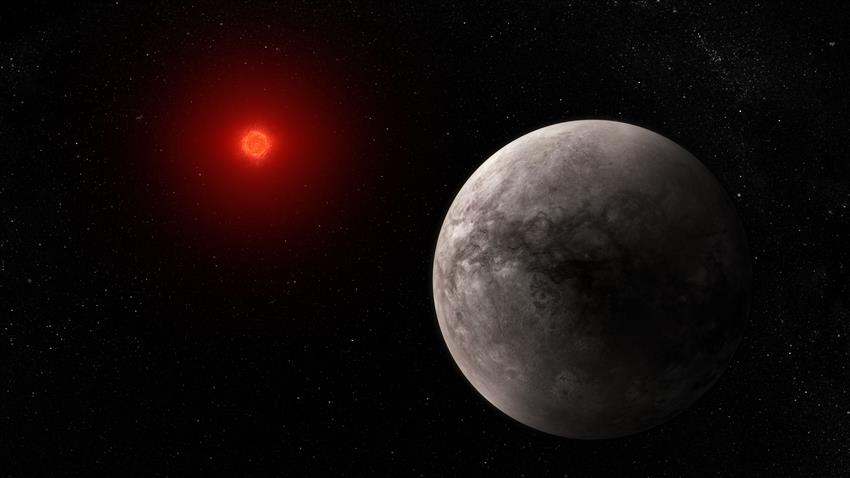
This illustration shows what the hot rocky exoplanet TRAPPIST-1 b could look like. It is based on data gathered by the James Webb Space Telescope's Mid-Infrared Instrument (MIRI) as well as previous observations from other ground- and space-based telescopes. (Credits: NASA, ESA, CSA, Joseph Olmsted (STScI))
Scientists are closely studying the TRAPPIST-1 system, which has seven Earth-sized planets around a Jupiter-sized star. A research team, led by Olivia Lim from iREx at the Université de Montréal, used Webb to observe the exoplanet TRAPPIST-1 b. Astronomers have examined its atmosphere using the Canadian instrument NIRISS, and their findings revealed new insights about its properties.
Unfortunately, the researchers detected stellar contamination in the observed data. Because the star has features on its surface, like darker regions called starspots and brighter regions called faculae, it causes variations in brightness that make it hard to see the transmission spectrum – the light that passes through the planet's atmosphere and gives information on what it's made of. So yes, more observations are needed to better understand this planet, but as Webb continues its mission, there might be exciting discoveries ahead that could help us understand mysteries of exoplanets' atmospheres!
9. Uncovering ultra-hot Jupiter's secrets
To learn about ultra-hot Jupiter-like planets exceeding 2,000 kelvin (about 1,725 degrees Celsius), Webb is working hard to uncover the mysteries hidden in their atmospheres. With the help of the Canadian instrument NIRSS, a team of researchers, including Canadian authors from iREx, Louis-Philippe Coulombe, Björn Benneke, Caroline Piaulet, Michael Radica and Pierre-Alexis Roy, discovered new details about the hot giant planet, WASP-18 b. As it turns out, the exoplanet captures a kind of heat pattern from the sunny side of the gas giant planet that we didn't know about before.
The research models that help us understand this cosmic puzzle revealed interesting findings: it gets warmer higher up in the atmosphere; molecules break into smaller pieces due to absorbing energy; the planet's atmosphere receives lots of heavy elements from the star; and there's more oxygen compared to carbon. As a bonus, we get a map showing how hot it gets on the sunny side, with the highest temperature at the point that faces the star. It gives us a clearer picture of how extreme this exoplanet's environment is.
10. K2-18 b: Exploring the potential for life
After the historic discovery led by a Canadian team from the Université de Montréal revealing water vapour and clouds on an exoplanet in the habitable zone, exoplanet K2-18b is back in the spotlight. About three years later, thanks to the Canadian instrument NIRISS on Webb, a new discovery was made about this exoplanet, which is approximately 8.6 times the mass of Earth.
It revealed the presence of molecules than contain carbon, specifically methane and carbon dioxide, in its atmosphere. This discovery aligns with previous studies suggesting that K2-18 b could be a Hycean exoplanet. Hycean combines the words "hydrogen" and "ocean," indicating that this exoplanet might have a hydrogen-rich atmosphere and a surface that could be covered by an ocean. The presence of both hydrogen and water and the fact that K2-18 b is in the habitable zone of its star could mean that its environment supports life. However, some researchers have introduced the possibility of an alternative interpretation for this exoplanet. Some argue for a mini-Neptune-type classification for several reasons, including the fact that it would be the simplest explanation. To be continued!
